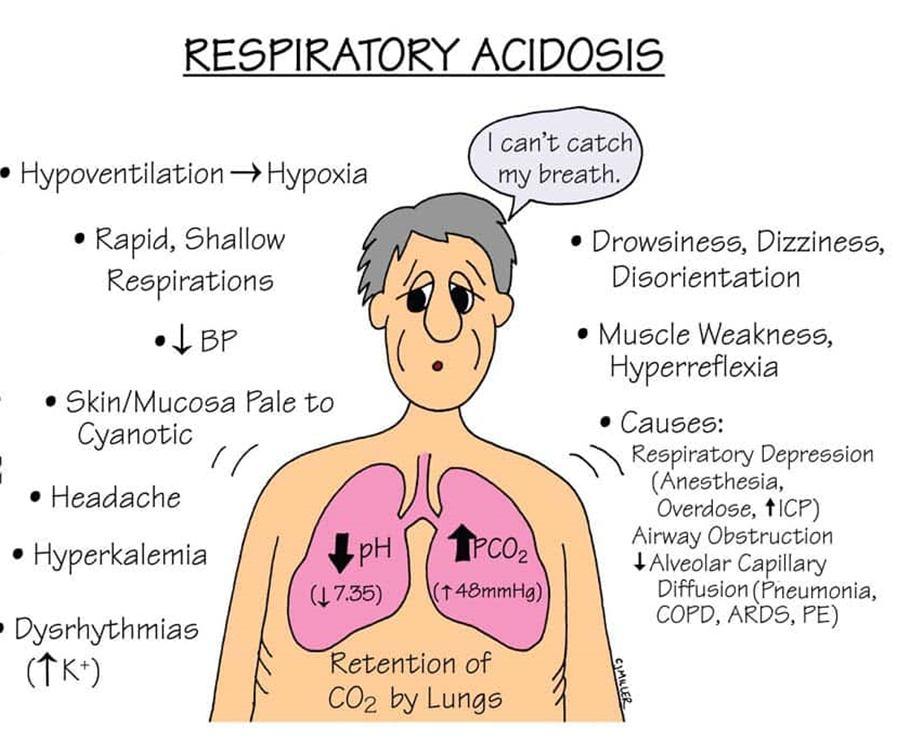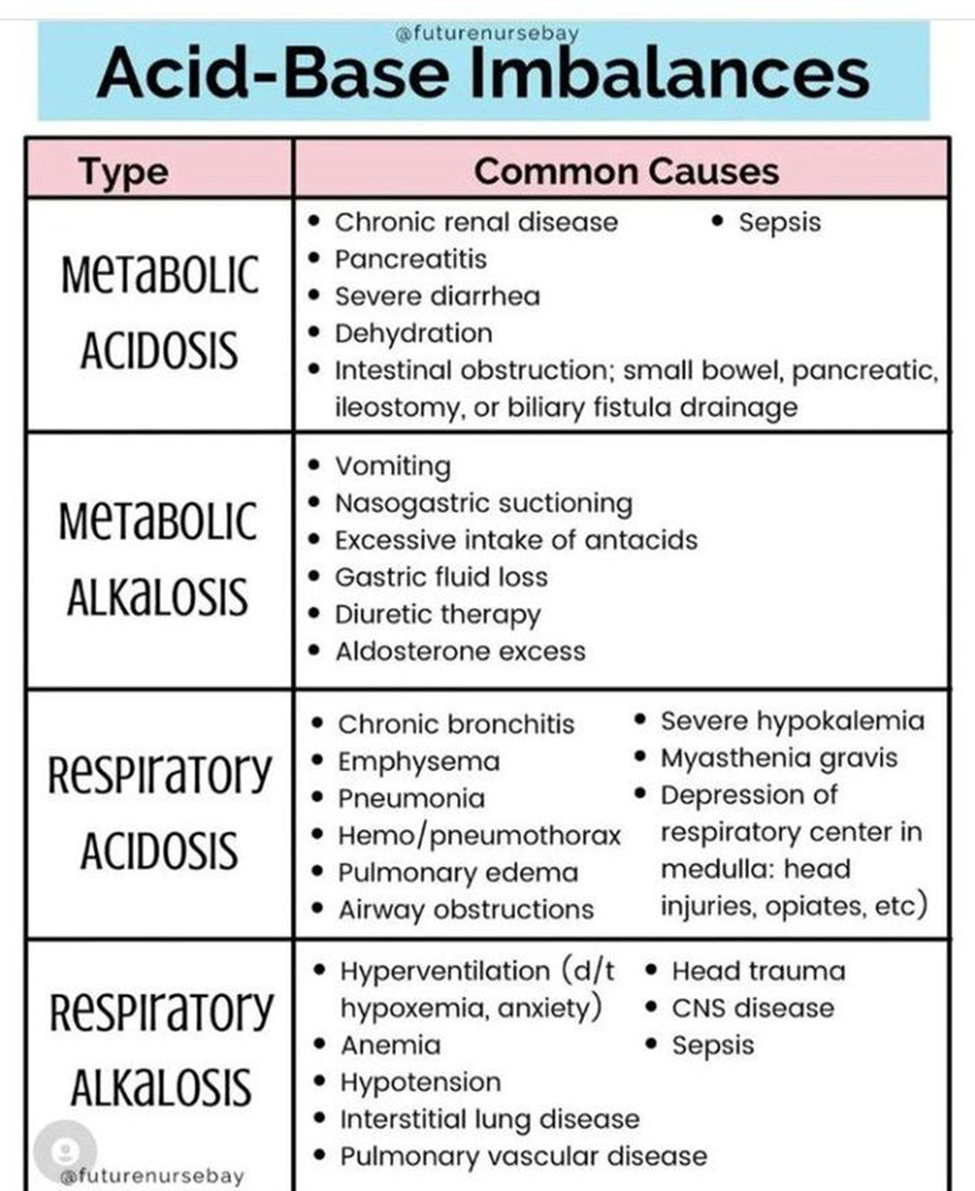The nurse understands causes of respiratory acidosis include: (SELECT ALL THAT APPLY)
asthma
hyperventilation
chronic obstructive pulmonary disease
renal insufficiency
pneumonia
Correct Answer : C,E
A. Asthma:
Explanation: Asthma is associated with respiratory alkalosis, not respiratory acidosis. In asthma, there is often hyperventilation leading to a decrease in carbon dioxide levels.
B. Hyperventilation:
Explanation: Correct. Hyperventilation can cause respiratory alkalosis, not respiratory acidosis. It leads to a decrease in carbon dioxide levels.
C. Chronic obstructive pulmonary disease (COPD):
Explanation: Correct. Conditions like COPD can lead to respiratory acidosis. In COPD, there is impaired ventilation, leading to an accumulation of carbon dioxide.
D. Renal insufficiency:
Explanation: Renal insufficiency is not a direct cause of respiratory acidosis. Respiratory acidosis is primarily related to respiratory system dysfunction.
E. Pneumonia:
Explanation: Correct. Pneumonia can cause respiratory acidosis. In pneumonia, there may be difficulty in eliminating carbon dioxide due to impaired gas exchange.

Nursing Test Bank
Naxlex Comprehensive Predictor Exams
Related Questions
Correct Answer is B
Explanation
A. "Diet, exercise, and oral medications can be effective. I will ask the physician to prescribe Metformin":
Explanation: This statement is not accurate for type 1 diabetes. Type 1 diabetes results from the inability of the pancreas to produce insulin, so oral medications like Metformin, which work to increase insulin sensitivity or reduce glucose production in the liver, are not effective. Insulin replacement is the mainstay of treatment for type 1 diabetes.
B. "Your body does not produce insulin, and the only treatment is injected insulin":
Explanation: This is the correct statement. In type 1 diabetes, the pancreas does not produce insulin or produces very little, and insulin cannot be taken orally because it would be broken down in the digestive system. Therefore, injections are the primary and necessary mode of insulin delivery.
C. "Glucophage can help your body better utilize the insulin secreted by the pancreas":
Explanation: This statement is more applicable to type 2 diabetes, where the pancreas may still produce insulin, but the body's cells are resistant to its effects. In type 1 diabetes, the issue is a lack of insulin production, so medications to improve insulin utilization are not relevant.
D. "Initially, you will need injections, but after your body adjusts to the insulin, you can switch to Metformin":
Explanation: This is not accurate for type 1 diabetes. The need for insulin in type 1 diabetes is not something the body adjusts to over time. Insulin is a lifelong requirement for individuals with type 1 diabetes, and it cannot be replaced by oral medications like Metformin.
Correct Answer is D
Explanation
A. Respiratory Acidosis:
Explanation: Respiratory acidosis occurs when there is inadequate elimination of carbon dioxide, leading to an increase in PaCO2 and a decrease in blood pH. This is typically associated with conditions that impair ventilation.
B. Metabolic Alkalosis:
Explanation: Metabolic alkalosis is characterized by an elevated blood pH and bicarbonate (HCO3-) concentration. It is not directly caused by hyperventilation but is often associated with conditions such as excessive vomiting or excessive bicarbonate intake.
C. Metabolic Acidosis:
Explanation: Metabolic acidosis is characterized by a decrease in blood pH and bicarbonate concentration. It is not directly caused by hyperventilation but may result from conditions such as diabetic ketoacidosis or lactic acidosis.
D. Respiratory Alkalosis:
Explanation: Hyperventilation is the most common cause of respiratory alkalosis. During hyperventilation, there is an excessive loss of carbon dioxide (CO2) through rapid breathing, leading to a decrease in the partial pressure of carbon dioxide (PaCO2) in the blood. This results in an increase in blood pH, causing an alkalotic state.

Whether you are a student looking to ace your exams or a practicing nurse seeking to enhance your expertise , our nursing education contents will empower you with the confidence and competence to make a difference in the lives of patients and become a respected leader in the healthcare field.
Visit Naxlex, invest in your future and unlock endless possibilities with our unparalleled nursing education contents today
Report Wrong Answer on the Current Question
Do you disagree with the answer? If yes, what is your expected answer? Explain.
Kindly be descriptive with the issue you are facing.
